Kadri Shree Manjunatha Temple
The Kadri Shree Manjunatha Temple is a historic Hindu temple dedicated to Lord Shiva, located in Mangalore, Karnataka, India. The temple is believed to be built during the 10th or 11th century, though inscriptions suggest major modifications in the 14th century.

Contents
- 1 Kadri Manjunath Temple History:
- 2 Legend of Kadri Shree Manjunatha Temple:
- 3 Significance of Kadri Shree Manjunatha Temple:
- 4 Myths and Beliefs of Kadri Shree Manjunatha Temple:
- 5 Kadri Shree Manjunatha Temple Timing and Rituals:
- 6 Places to visit near Kadri Shree Manjunatha Temple:
- 6.0.1 Nageshwar Jyotirlinga Dwaraka: 7th CE Temple with Divine Powers
- 6.0.2 Grishneshwar Temple: Wealth and Pleasure at Shiva’s Feet
- 6.0.3 Kedarnath Temple: One of Jyotirling & Char Dham
- 6.0.4 Trimbakeshwar Jyotirlinga Temple
- 6.0.5 Sacred Kashi Vishwanath Temple: 11th Jyotirling of Liberation
- 6.0.6 Aundha Nagnath Temple: 8th Jyothirling with Divine Serpents
- 7 FAQ:
- 8 How to reach Kadri Shree Manjunatha Temple:
Kadri Manjunath Temple History:
· Early Origins (10th-11th Century): There’s evidence suggesting the temple’s roots lie in a Buddhist monastery called Kadarika Vihara. An inscription dated around 968-1068 AD mentions King Kundavarma of the Alupa dynasty installing a bronze idol of Lokeshwara (identified as Brahma) here. This period reflects Buddhist influence in the area.
· Transformation into Hindu Temple (14th-15th Century): Over time, the temple transitioned into a Hindu place of worship dedicated to Lord Shiva, known as Manjunatha. The temple structure was also rebuilt in stone during this period, reflecting the Vijayanagara architectural style.
· Interesting Features: The temple complex offers a glimpse into its layered history. You’ll find the main idol of Lord Manjunatha along with shrines for other deities like Ganesha, Durgaparameshwari, and Ayyappa. There are also natural spring-fed tanks and caves, some even called “Pandava Caves.”
Read More>> Tirumala Tirupati Venkateswara Swamy
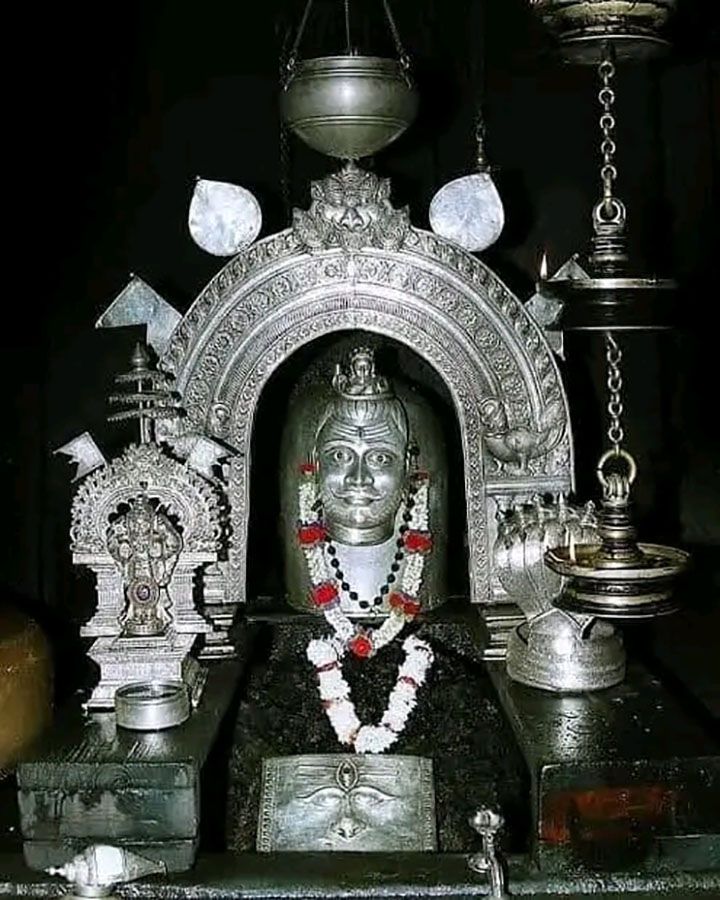
Legend of Kadri Shree Manjunatha Temple:
According to the legend, Lord Parashurama, after wiping out the egotistical Kshatriya kings, felt remorseful for the bloodshed. He sought refuge in the Sahyadri mountains, performing penance to appease Lord Shiva. Pleased by his prayers, Lord Shiva appeared before Parashurama and promised to take the form of Manjunatha for the benefit of mankind. He instructed Parashurama to perform meditation at Kadalivana (present-day Kadri).
When Parashurama reached Kadalivana, he found the area occupied by the sea. Determined, Parashurama approached the Ocean King and requested him to recede the waters. The Ocean King agreed, and Parashurama threw his axe into the sea, marking the new coastline, which is believed to be the formation of Tulunadu. This region is also known as Parashurama Kshetra or Parashurama Shrishti, meaning “the land created by Parashurama”.
Parashurama then meditated on the blessings of Lord Brahma, Vishnu, and Shiva. Pleased by his devotion, Lord Shiva manifested himself as Manjunatha along with Goddess Parvati at Kadri, forever blessing the land.
Read More>> Shree Jagannath Temple Hyderabad
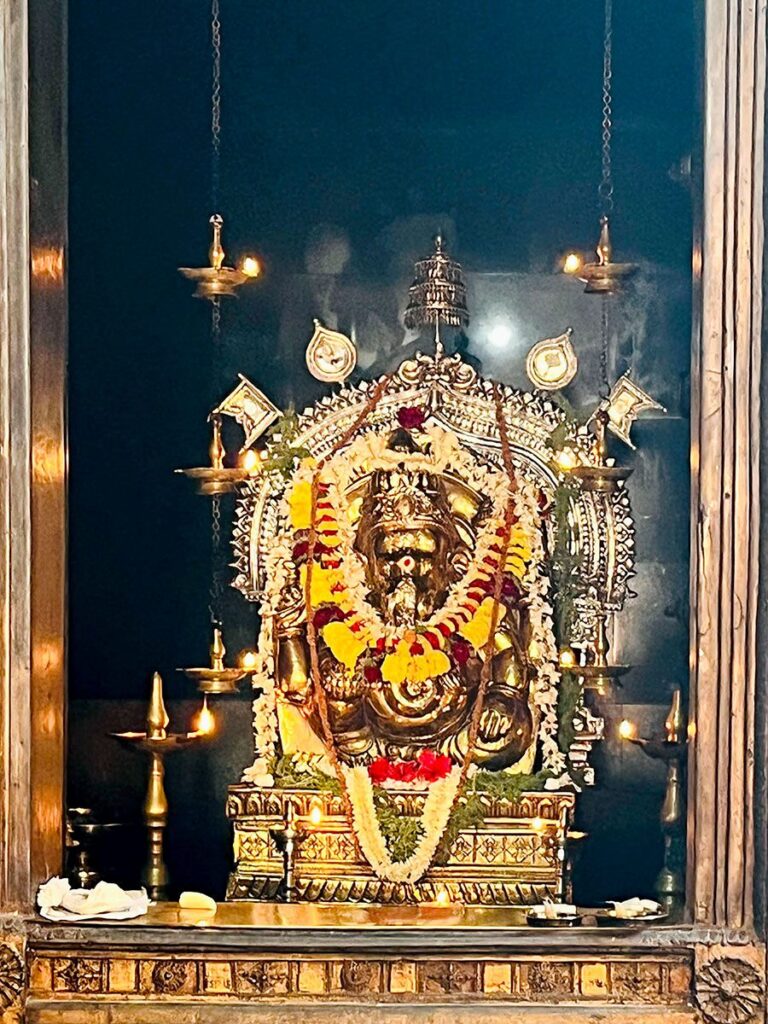
Significance of Kadri Shree Manjunatha Temple:
· Historical Significance: Believed to be built between the 10th and 11th centuries, it’s one of the oldest Shiva temples in Mangalore. The temple’s architecture reflects the Vijayanagara style.
· Religious Harmony: The temple is a unique example of co-existence between Hinduism and Buddhism. The presiding deity, Lord Manjunatha, is a form of Shiva worshipped in a Buddhist style with three faces, six arms, and a crown depicting Dhyani Buddha. People from both faiths visit the temple.
· Buddhist Origins: Historical evidence suggests the site was originally a Buddhist monastery called “Kadarika Vihara” before its transformation into a Hindu temple. An inscription dated around 968 AD mentions the installation of a Lokeshwara idol (identified as Brahma) by King Kundavarma of the Alupa dynasty.
· Architectural Beauty: The temple complex is known for its exquisite architecture, including a granite structure, natural spring tanks, and laterite caves sometimes referred to as Pandava Cave.
Read More>> Matsya Narayana Temple Chennai
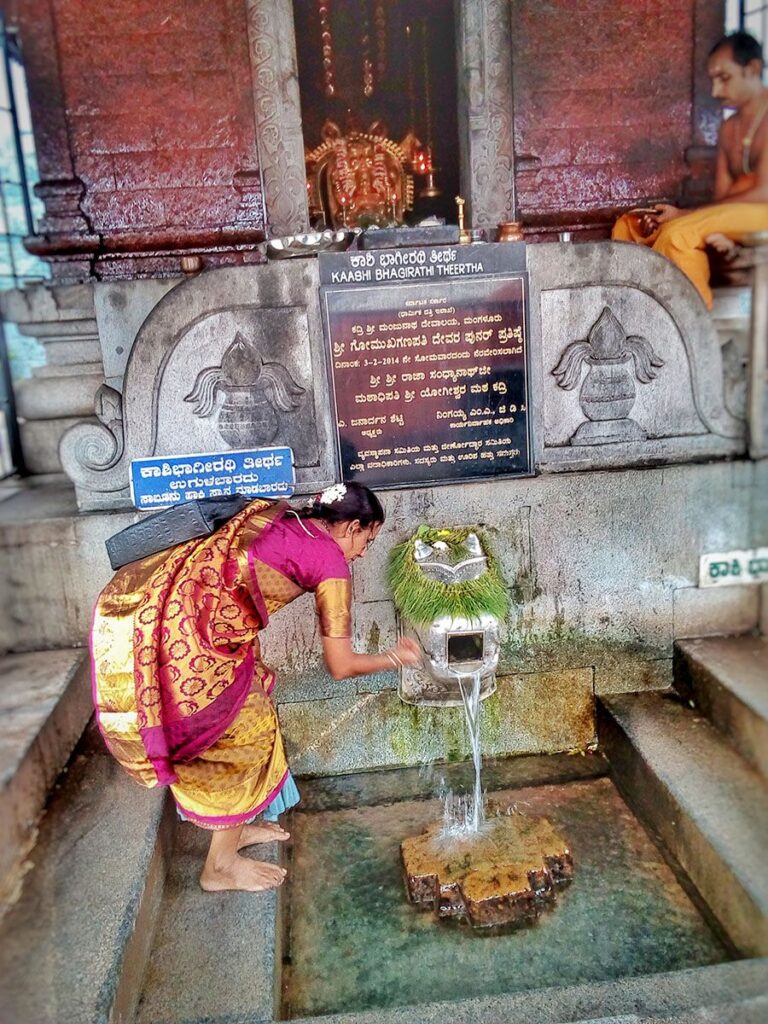
Myths and Beliefs of Kadri Shree Manjunatha Temple:
Lord Parashurama’s Penance: A popular legend narrates the story of Lord Parashurama, an incarnation of Vishnu. After defeating egotistical Kshatriya kings, he felt uneasy possessing donated land. Seeking a new abode, he performed penance on the Sahyadri mountains. Pleased by his devotion, Lord Shiva promised to incarnate as Manjunatha for the good of mankind and advised Parashurama to meditate at Kadalivana (present-day Kadri).
Origin of the Sacred Spring: Another belief is associated with the natural spring called Gomukha located behind the temple. Devotees believe the water originates from the holy Ganges river in Kashi and possesses purifying properties. The spring feeds nine ponds where pilgrims bathe before entering the main temple. These beliefs highlight the temple’s sanctity and its association with attaining spiritual purity.
Kadri Shree Manjunatha Temple Timing and Rituals:
Timing:
- Monday: 6:00 AM – 8:00 PM (This information might differ from some sources that mention 5:30 AM opening, so it’s best to check a reliable source closer to your visit)
- Tuesday – Sunday: 6:00 AM – 1:00 PM and 4:00 PM – 8:00 PM
Rituals at Kadri Shree Manjunatha Temple:
- Regular pujas: Daily pujas are offered to Lord Manjunatha and other deities in the temple.
- Special pujas: Specific pujas like Ekadasha Rudrabhishekam (performed for 11 Rudras of Shiva) and Shata Rudrabhishekam (considered highly auspicious) can be arranged.
- Darshan: Devotees visit the temple for darshan, which involves seeing the idol of the deity.
- Annadana: The temple offers free meals (Annadana) to devotees from 12:30 PM to 2:00 PM.
Festivals (kadri temple jatre):
The Kadri Shree Manjunatha Temple celebrates its grand annual festival during the Makara Sankranti which falls in the month of January. The festivities span over nine days and are known as the Jathra Mahothsava. Here’s a glimpse into the key events:
- Day 1: The celebrations commence with a series of rituals including Theertha snana (holy bath) of the idol, Dhwaja stambha (flag post) hoisting, illumination of the Kanchi sthambha (lamp post) and Bali Uthsava (sacrifice ritual).
- Day 2 & 3: These days witness community events and preparation for the grand procession.
- Day 4: Maha Rathotsava(grand chariot procession) is the highlight of the festival. The idol of Lord Shree Manjunatha is taken in a procession on a decorated chariot. Thousands of devotees throng the temple to witness this spectacular event.
- · Day 5: Another chariot procession, Belli Rathotsava (silver chariot procession) is held.
- · Day 6-8: These days are marked by special pujas and rituals including Thulabhara (offering one’s weight in equivalent materials like food grains), Chandramandalothsava (procession under the moonlight)
- · Day 9: The nineth day is dedicated to Malaraya Daiva (considered a servant of Lord Shiva) and Anappa Daiva. A special procession is held where the Bhandara (offerings) from the temple are carried to the Kadri hills for a ceremony called Nemotsava.
Read More>> Martand Sun Temple: Where Sunbeams Kiss Stone
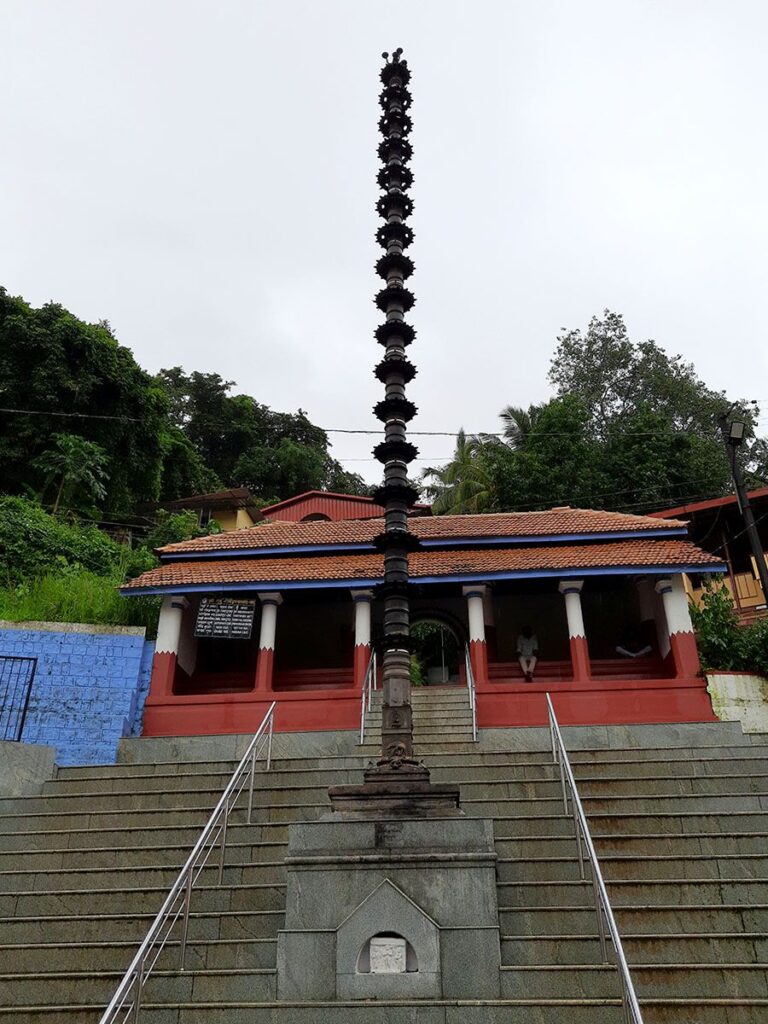
Places to visit near Kadri Shree Manjunatha Temple:
- Mangaladevi Temple: Situated about 3 kilometers from Kadri Shree Manjunatha Temple, this temple is dedicated to the Hindu goddess Mangaladevi.
- Panambur Beach: Approximately 11 kilometers from the temple, Panambur Beach is a popular spot for its golden sands and serene atmosphere.
- St. Aloysius Chapel: Located in Mangalore city, this chapel is renowned for its stunning architecture and intricate frescoes. It’s around 6 kilometers from Kadri Shree Manjunatha Temple.
- Sultan Battery: About 6 kilometers away, Sultan Battery is an ancient watchtower built by Tipu Sultan. It offers panoramic views of the surrounding landscape.
- Pilikula Nisargadhama: Situated roughly 15 kilometers from the temple, Pilikula Nisargadhama is a picturesque nature park featuring a zoo, botanical garden, lake, and boating facilities.
- Ullal Beach: Located around 10 kilometers from the temple, Ullal Beach is known for its pristine shoreline and tranquil ambiance.
- Mangalore City Center Mall: If you’re in the mood for some shopping or entertainment, this mall is around 7 kilometers away from the temple.
FAQ:
- What is the significance of Kadri Shree Manjunatha Temple?
- Kadri Shree Manjunatha Temple is one of the oldest temples in Mangalore, Karnataka, dedicated to Lord Shiva. It holds immense religious and historical importance for devotees.
- When was Kadri Shree Manjunatha Temple built?
- The exact date of its construction is not certain, but it is believed to be built during the 10th or 11th century.
- What are the main features of the temple?
- The temple is renowned for its unique architecture, with its seven-tiered gopuram (tower) and intricate carvings depicting scenes from Hindu mythology. It also houses a bronze statue of Lord Lokeshwara (Ardhanareeshwara), which is considered to be one of the oldest of its kind.
- What are the festivals celebrated at Kadri Shree Manjunatha Temple?
- The temple celebrates various festivals throughout the year, including Mahashivaratri, Navaratri, and Kartika Maasa. During these festivals, the temple sees a large influx of devotees and hosts special rituals and cultural events.
- Is there any special ritual or tradition associated with the temple?
- One notable tradition is the annual procession of the temple’s chariot during the Kadri Kambla festival. The chariot is pulled by devotees as part of the religious procession.
- Is the temple open to visitors of all faiths?
- Yes, Kadri Shree Manjunatha Temple is open to people of all faiths and welcomes visitors to explore its premises and participate in the rituals.
- Are there any nearby attractions to visit along with the temple?
- Yes, there are several attractions near the temple, including Mangaladevi Temple, Panambur Beach, St. Aloysius Chapel, and Sultan Battery, among others.
How to reach Kadri Shree Manjunatha Temple:
- By Road: Mangalore is well-connected by road with major cities and towns in Karnataka and neighboring states. You can reach the temple by taking a bus or hiring a taxi from any part of Mangalore city.
- By Train: Mangalore has a railway station, Mangalore Central (MAQ), which is connected to major cities like Bangalore, Mumbai, Chennai, and Delhi. From the railway station, you can hire a taxi or an auto-rickshaw to reach Kadri Shree Manjunatha Temple, which is approximately 7 kilometers away.
- By Air: Mangalore International Airport (IXE) serves both domestic and international flights. From the airport, you can hire a taxi or use public transportation to reach the temple, which is around 14 kilometers away.












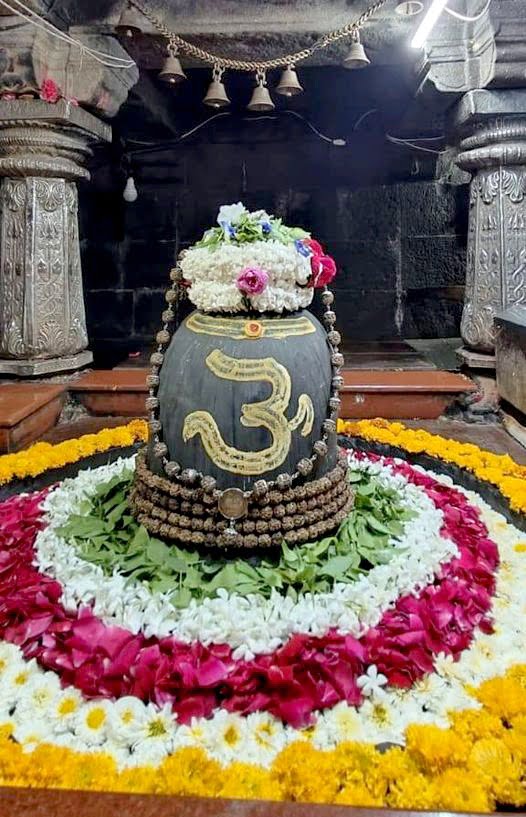
One Comment